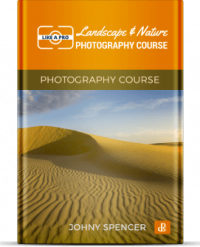Why You Should Get Yourself A Guilt-Free Camera!
By Federico Alegria
I don't like to refer to photographers as amateurs or professionals; I would rather say that they are either passionate or not. You can hire a professional photographer who is bland and without passion. And you can meet an “amateur” photographer who is extremely passionate about the craft.
Let's talk about passionate photographers today. There comes a time in a photographer's life when this passion gets serious, and your hobby is now a craft and it might start demanding tremendous amounts of energy and focus. To clarify, I'll talk about my very own, personal experience first so you can get the bigger picture here.

I've been a street and documentary photographer for over a decade now. I love it, and I am forever drawn to this beautiful genre. I only shoot scenes that feel meaningful to me. However, this serious approach has deprived me of having fun taking pictures of anything that might feel silly or vernacular.
Where Does The Guilt-Free Camera Concept Fit Here?
So I got, what I call, a guilt-free camera; a camera that is different from the one I regularly use for my serious photographs. That is a camera that doesn't make me feel guilty for simply taking photos. I first encountered this feeling after learning to shoot with film. It was all new again, everything was worthy of being photographed, and everything looked interesting to me. It was like learning about photography all over again. Of course, I eventually started taking photos of people and documenting social themes, but I never felt guilty, just taking a “snap” of a doorknob, for example.My Experience With Cameras
When I first started, I shot mainly with a chunky DSLR from Canon. Later, as I moved into the street and documentary photography genres, I picked up a compelling point and shoot, the G1 Mark 1. After a couple of years, I switched to my current Fuji X100T. I use this camera often, but I don't feel moved to shoot everything with it. Therefore, I use any of my guilt-free cameras to have fun and leave my inner, serious photographer behind.Here is what I've learned:
My Point And Shoot Experience

It gave me an amazing experience; it was my first encounter with having a dedicated photography device with me at all times. It is what gave me my current view on cameras as a tool mind-set. This tiny red camera shot funny JPEGs, but it gave me the freedom of being a goofy kid with a camera all the time.
(Please don't tell my mom I lost it)
My Beloved Film Camera

After I learned how to develop film, I got a little bit obsessed. I was shooting everything with my film cameras (I got three of them, a Pentax Super Me, a Pentax K1000 and a Yashica Mat 124G TLR camera!). From flowers to doorknobs, umbrellas and my parents, everything was new again, and I loved that experience.
For the serious jobs, the bigger digital cameras were the ones I used, but shooting with film made me more conscientious about shooting less, but with more quality.
Taking On An Experimental Camera

VSCO Camera App

VSCO is like a very hipstery Instagram with a weird UX/UI. But it renders color in a fun way, and they sell some amazing presets that promise to reproduce specific film looks.
After changing over to a more powerful smartphone, I downloaded the VSCO mobile app. I had so much fun with it that I even built a side project that you can see here.
Thanks to this, I'm able to have fun with photography, and I also ended up doing some candids as well. But I don't feel guilty about shooting a rock or a tree, for example.
This tiny free app has made me see the world from a different and more relaxed perspective.
Getting A Small Action Camera


Whatever you do, never stop being surprised by the great wonders of photography! Teach others, get guilt-free cameras, or switch genres from time to time.
Tell us what you do to keep photography fresh in the comments below
Share this article.



























 https://resources.digital-photography-school.com/ref/937/
https://resources.digital-photography-school.com/ref/937/









